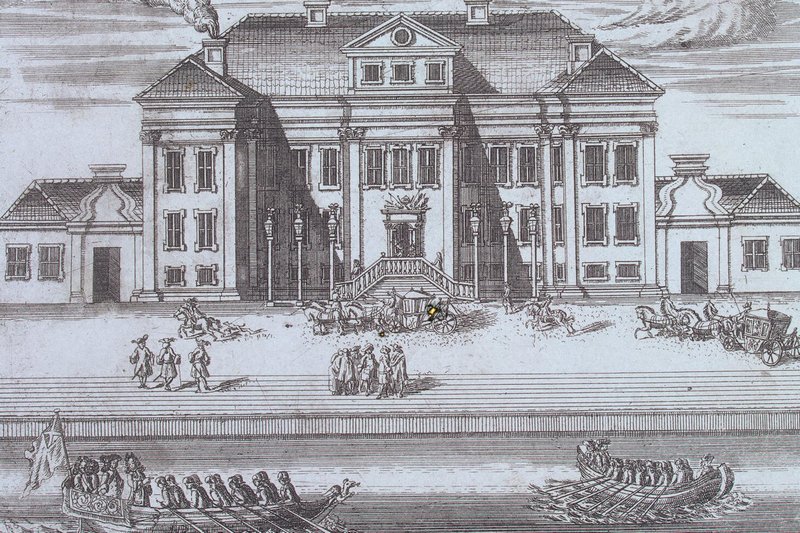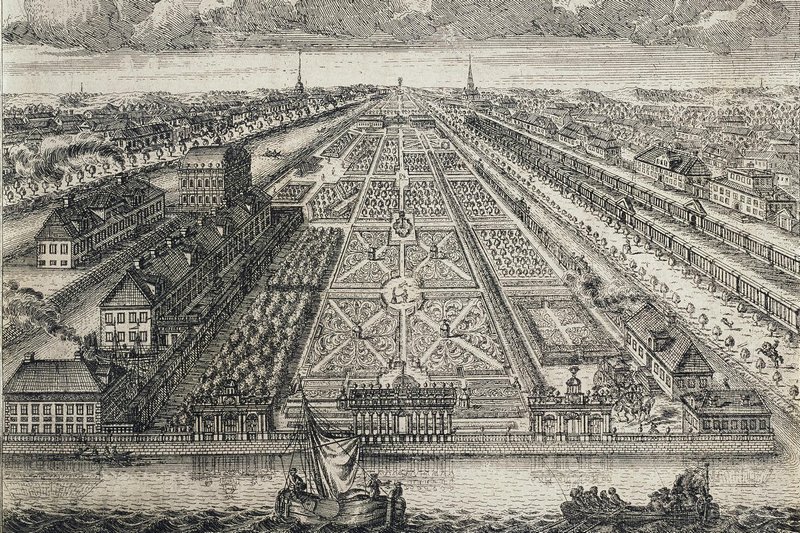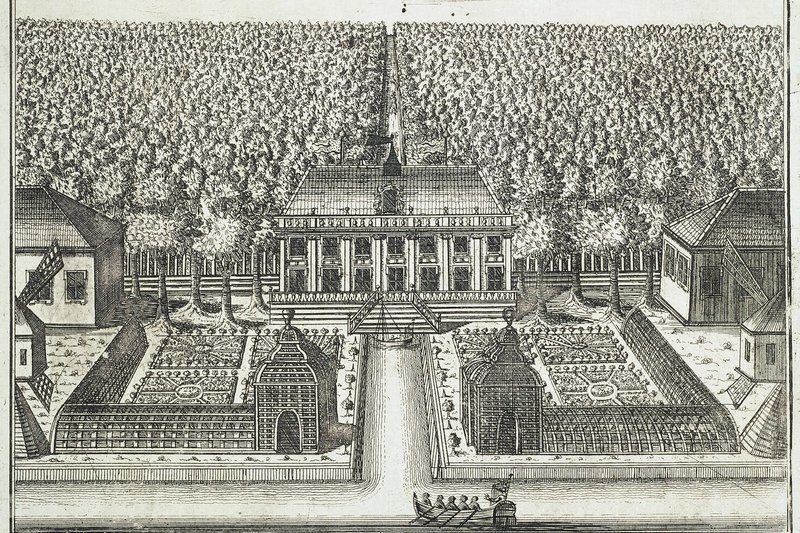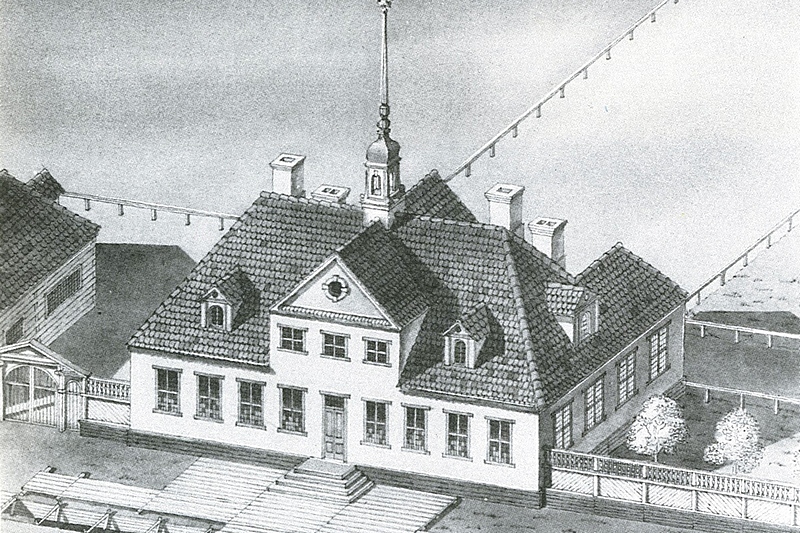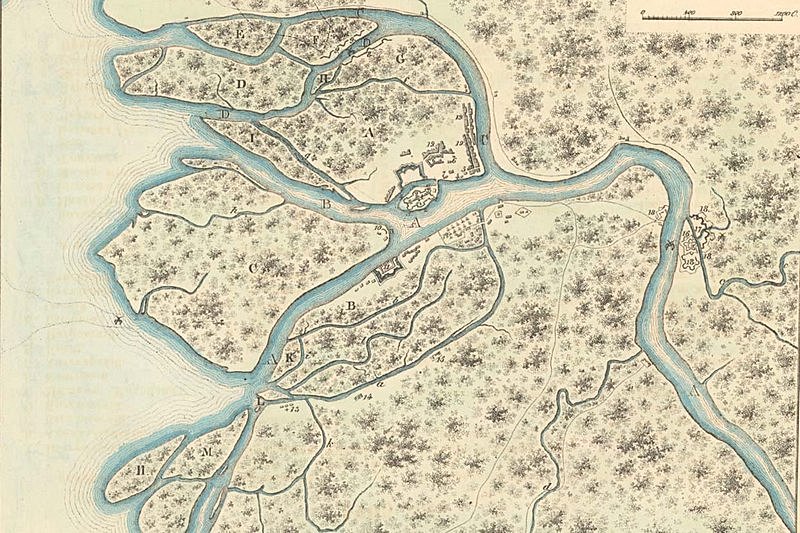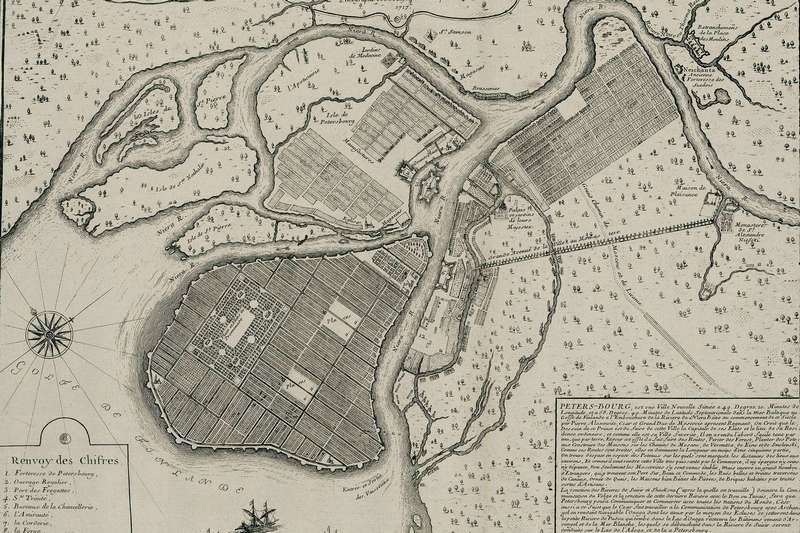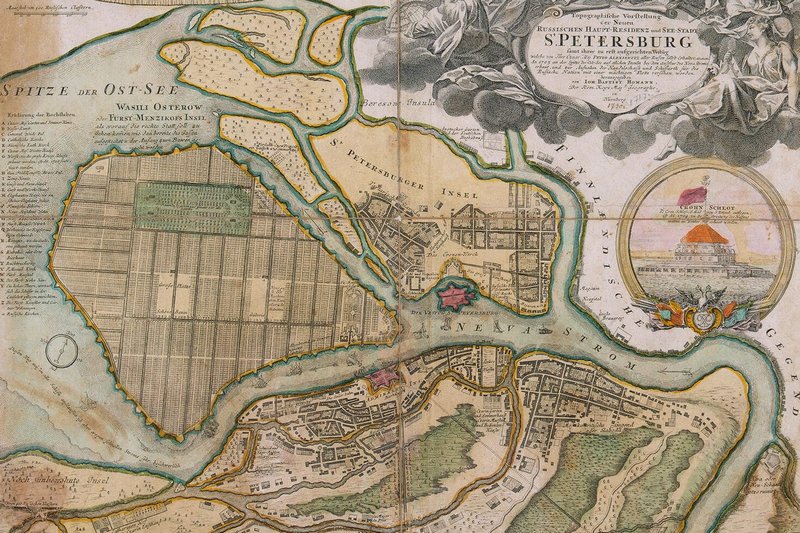St. Petersburg in the era of Peter the Great (1703-1725)
According to one legend, Peter and his associates were boating around the Neva Delta, inspecting various islands. He came ashore on Zaychiy Ostrov (Hare Island), and suddenly noticed an eagle soaring high in the sky above him (the eagle, in double-headed form, is a symbol of the Russian government). This was interpreted as a good omen and the Tsar gave the command to build the fortress at this spot. Accidentally or intentionally, the location of the fortress was also strategically important, blocking the Neva's entrance to enemy fleets.
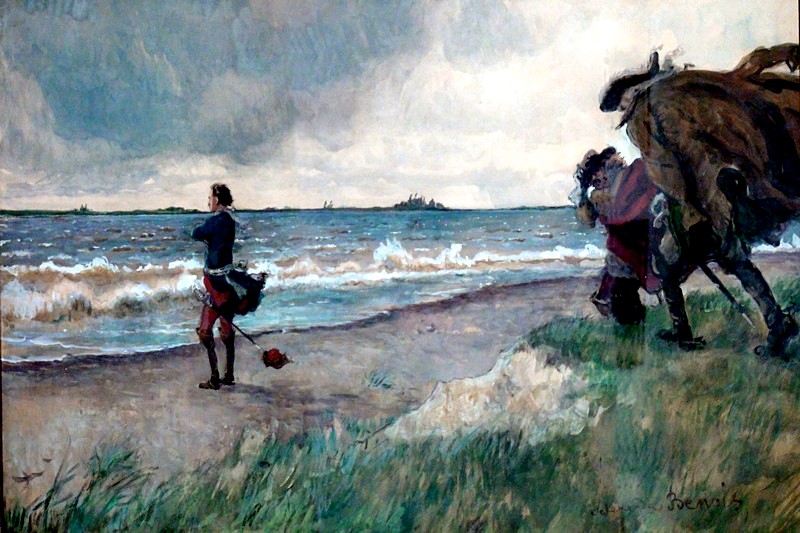
In the last years of the seventeenth century, Peter the Great had visited Western Europe and begun to dream of building a magnificent city along European lines. However, the earliest structures in the new city were humble in comparison to his grandiose plans. Petersburg is unique in that it has retained its first residential house. Only a few days after the official founding of the city, a small wooden cottage, combining elements of both Russian and Dutch architecture, was built for Peter, and has become famous as the Cabin of Peter the Great. The Tsar planned to construct a city of brick and stone, but as there were no brick factories anywhere in the vicinity, the Tsar ordered the cottage to be painted with red with white detailing in imitation of brickwork, as a form of visual instruction and admonition to the new city's inhabitants. The Cabin of Peter the Great still stands on the Petrovskaya Embankment, where within a protective brick pavilion one can view both the cabin and the personal belongings that Peter kept with him during the early days of the city's construction.
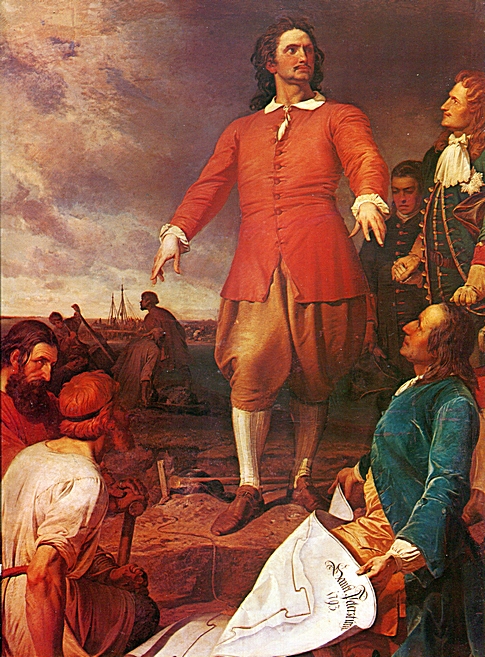
Peter the Great founded the Admiralty, which until the beginning of the nineteenth century was in use as a shipyard and where Tsar Peter personally participated in the design and construction of ships for the Baltic Fleet. On the site of the former shipyard now stands a monument to Peter the Great as the "Tsar Carpenter". A clearing was cut through the forest from the Admiralty to the Alexander Nevsky Monastery and a road was laid which later became the city's most important avenue, Nevsky Prospekt. It is thought that Peter himself proposed the idea of the "Nevsky Trident," in which the three main avenues of St. Petersburg (Nevsky Prospekt, Gorokhovaya Ulitsa and Voznesensky Prospekt) all converge on the golden spire of the Admiralty. At the behest of the Tsar, houses in Petersburg were built in the European manner along the "red line" (that is, the curb or sidewalk) without traditional, pre-Petrine gardens fronting the houses. The Tsar ordered that houses be built according to standard architectural designs for the various segments of the population. Kikin Hall on Shpalernaya Ulitsa serves as an example of a typical house for the wealthy. The characteristic architecture of Petrine St. Petersburg can be evaluated based on the following buildings: The Twelve Colleges, the Menshikov Palace, Peter the Great's Summer Palace in the Summer Garden, and the Kunstkammer. On the left bank of the Neva, opposite Peter the Great's Cabin, the Tsar ordered that a park be built with marble statues and fountains. In the park, that was christened the Summer Garden, stands the modest, two-story Summer Palace of Peter the Great. The marble statues were replaced with copies in 2011, and a number of the fountains (destroyed in the flood of 1777) have recently been reinstalled.

Standing on the bank of the tiny Winter Canal that runs between the New Hermitage and the Hermitage Theatre, it is possible to detect a fragment of Peter the Great's Winter Palace, in which the Tsar lived from 1712 and also died. The walls of Peter's original palace were incorporated into the construction of the Hermitage Theatre, but during the most recent restoration, a fragment of the wall was left exposed to view.
Peter's personality has also left a deep mark on the "necklace" of palatial residences surrounding St. Petersburg. The Tsar founded the magnificent architectural ensemble at Peterhof, whose palaces and fountains were supposed to outshine Versailles. Peter gave his wife an old Swedish manor with hunting grounds, which was later transformed into the luxurious Tsarskoye Selo. On the island of Kotlin, Peter established the naval base of Kronstadt, and the neighboring town of Sestroretsk sprung up around a munitions factory, also founded by Peter the Great.
Peter introduced the tradition of firing the cannon from the walls of the Peter Paul Fortress every day at noon. This tradition was abolished at the end of the eighteenth century, but reintroduced in 1957. We rarely remember that it was Peter the Great who introduced Russia to the German tradition of decorating a Christmas tree for Christmas and the New Year (before Peter, Russians celebrated the new year on 1 September). Therefore, when we see a Christmas tree on Palace Square or in other squares about the city, we should remember the great Tsar Reformer.
There are a large number of monuments commemorating Petersburg's founder, the most famous of which is the equestrian statue created by the French sculptor Etienne Maurice Falconet and nicknamed "The Bronze Horseman." Another equestrian statue in baroque style by Bartolomeo Carlo Rastrelli stands in front of Mikhailovsky Castle. An unusual monument to Peter by Mikhail Shemyakin is located on the territory of the Peter Paul Fortress and reflects not only the Tsar's outward appearance, but also his character traits. On the Admiralty Embankment stands Leopold Bernshtam's statue to the "Tsar Carpenter," which depicts Peter as a young shipbuilder. On the territory of the National Congress Palace in Strelna, there is a modern sculptural group entitled "The Tsar's Walk" which captures Peter together with his wife, Catherine I. There are also monuments to Peter in the Lower Park at Peterhof, on Bolshoi Samsonievsky Prospekt, in front of the Pribaltiskiy Hotel, in the Main Hall of the Moskovsky Railway Station, and at the beginning of Bolsheokhtinsky Prospekt in Okhta.
Every year on 27 May, the date of the founding of St. Petersburg, and on 9 July, Peter the Great's birthday, grateful Petersburgers place flowers on his grave in the Peter Paul Cathedral. While some historians may argue for a reassessment of the benefits of Peter's reforms, and certain Russian nationalists despise him for "betraying" the nation's traditions and customs, in the city that he created he is almost universally admired and cherished. Moreover, while his descendants may have diverged significantly from his initial plans for St. Petersburg, it is Peter's vision, his urbanity and energy, his love of progress, science and craft, that have inspired much of what is best about the city.

